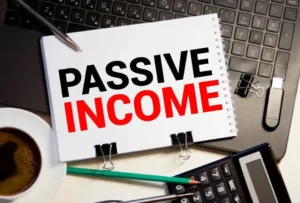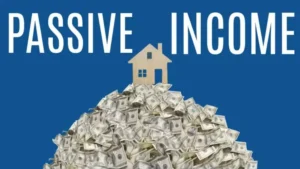Passive income is one of the hottest topics in personal finance and is constantly evolving. Many perceive passive income as the key to financial independence, envisioning endless vacations and unearned income. But this overly romantic vision is fraught with misconceptions. People sometimes develop a misconception about passive income due to misguided advice and inaccurate information spread online. In reality, passive income can be a fantastic way to build wealth. Without a clear goal, those who want to invest or start a business risk wasting time, money, and energy pursuing something unattainable. We believe that providing facts, rather than fantasies, will help you make informed choices. In this article, we debunk ten common myths about passive income, separate truth from hype, and offer useful information instead of false hope. When you understand the truth, you can identify better opportunities, avoid problems, and create a truly effective, long-term income stream.
Myth 1: Passive Income Requires No Effort
One of the most prevalent misconceptions is that passive income requires no effort. In reality, any way to make money requires effort, preparation, and setup from the start. Whether you’re writing a book, investing in real estate, or starting an online business, there’s a lot of work involved. And after the setup phase, there’s still maintenance required. You have to manage real estate, update your business, and monitor your investments. These tasks may not require full-time commitment, but they certainly demand attention.
Myth 2: Starting a Business Requires a Lot of Capital
You can earn passive income without being rich, but capital helps. Many successful entrepreneurs have started small and used their talent, time, and creativity instead of making large investments. For example, they might start a blog, sell digital products, or invest through a system that allows you to buy small amounts of stock. If you reinvest your early profits wisely, you can slowly transform a modest business into a significant source of income.
Myth 3: Passive Income Brings Instant Wealth
People often think that passive income is a way to get rich quickly, but that’s not true. Most passive income projects can take months or even years to generate real profits. Whether you’re building a rental portfolio, growing dividend stocks, or launching a lucrative YouTube channel, patience is required. People often overlook the gradual and steady process of wealth accumulation in their quest for rapid cash flow. Successful people view passive income as a long-term financial plan, not a quick fix.
Myth 4: Only Tech-Savvy People Can Earn Passive Income
Technology can help you start an online business, but it’s not a prerequisite for success. There are many ways to earn passive income, such as traditional real estate investing, creative royalties, franchising, or automated service businesses. None of these requires technical skills. As long as you’re willing to learn, adapt, and apply what you learn, you don’t need technical knowledge to earn a sustainable income.
Myth 5: All Passive Income is Essentially Passive
The term “passive income” can be misleading, as most income sources require some level of involvement on your part. Even dividend-paying stocks require you to research the company, monitor the market, and restructure your portfolio. You have to care for and manage tenants in your rental properties. Online businesses require ongoing customer service, upgrades, and marketing. Effective passive income is often semi-passive, meaning it requires minimal effort to manage in the long run, but it still requires some investment.
Myth 6: You can Rely on Passive Income for Life
Relying solely on passive income can be risky, especially in the beginning. Changes in the economy, the market, or people’s shopping habits can affect your income streams. Smart investors not only have multiple income streams but also choose different types of income, including both active and passive income. This approach ensures financial stability and allows you to handle unexpected situations.
Myth 7: Real Estate Is Always the Best Passive Income Source
Many people choose real estate as a way to earn passive income, but this isn’t always the best decision. Profits can fluctuate due to market fluctuations, property taxes, tenant issues, and maintenance expenses. Some people make a lot of money with real estate, while others lose a lot. The “best” way to make money without working depends on your skills, resources, market conditions, and long-term goals. Some people find investing in stocks or digital products more profitable and less stressful than maintaining real estate.
Myth 8: Passive Income Means You Can Stop Working Completely
While resigning from your job entirely is great, most people use passive income to supplement, not replace, a full-time job. Many entrepreneurs investigate how to earn money without working while still maintaining their primary job. This hybrid strategy offers security because your passive income grows over time. If you quit too early, your financial situation can become unstable.
Myth 9: Passive Income is Only for the Wealthy or Retired
Anyone, regardless of age or wealth, can earn passive income. Students can create online courses, working professionals can buy index funds, and artists can sell the rights to their work. It’s not a privilege but a financial tool. Early adoption can create a snowball effect, helping young people achieve financial independence faster.
Myth 10: You Don’t Need to Learn New Skills for Passive Income
It’s risky to think that anyone can earn passive income without any training. It’s crucial to continually learn new skills. Understanding how to invest, sell, or manage real estate can significantly increase your chances of success. Those who constantly adapt, grow, and learn new things fare better than those who rely on luck or prior knowledge.
Conclusion:
Passive income is a great way to achieve greater financial stability, but it’s not as easy as it seems. It requires preparation, hard work, learning new skills, and patience. By separating myths from facts, we can make choices that align with our skills and ambitions. In reality, satisfactory passive income depends on planning, regular adjustments, and diversification across different asset classes. If done right, it can provide lifelong wealth and security. Let’s stop talking about it and take action. Over time, we’ll see the true benefits.
FAQs:
1. Can I make money without investing?
Yes, some methods, such as blogging or affiliate marketing, do not require much capital; however, they demand significant time and effort to yield benefits.
2. How long does it take for passive income to yield a return?
Some income streams take months, while others take years. Persistence and reinvestment can yield returns faster.
3. What’s the safest way to make money without earning it?
There are no risk-free investments, although diversified index funds and government bonds are considered less risky than real estate or starting a business.
4. Do I need a mentor to make money without earning it?
If you are keen to learn on your own, you don’t need a mentor, although a mentor can help you learn faster and avoid common mistakes.
5. Can passive income help me achieve financial freedom?
Yes, but it usually requires years of hard work, multiple income streams, and targeted reinvestment.




